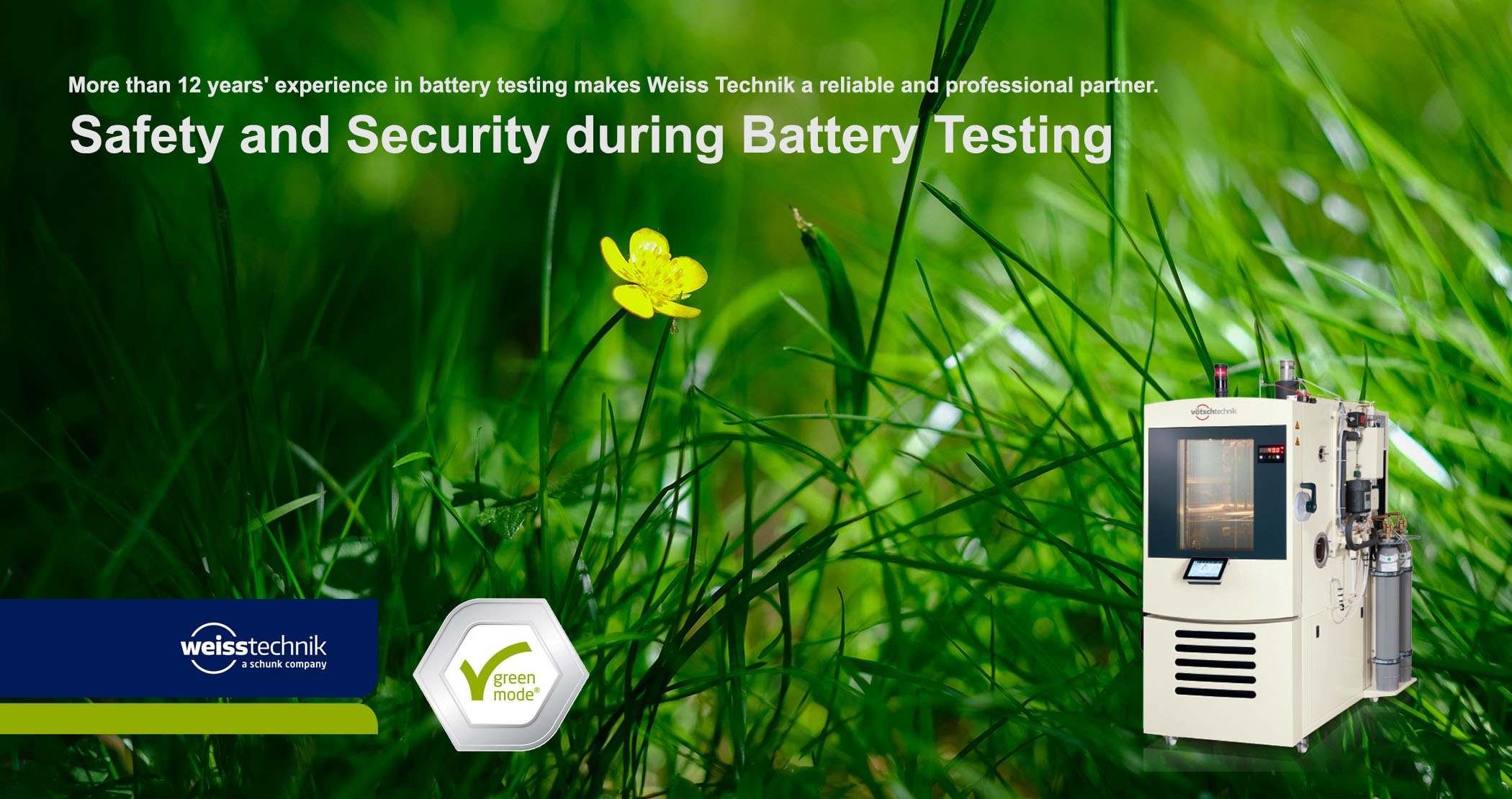Safety and security during battery testing
The potential effects and dangers of a malfunction increase as the battery storage capacity increases. Safety in the testing laboratory is, therefore, a top priority for us.

Assessing dangers correctly
Due to the high energy density of lithium-ion batteries, overloads and malfunctions can occur during tests. If a so-called thermal runaway occurs in a single cell, this uncontrolled chemical reaction can spread to other cells and destroy the entire battery.
We advise you on how much safety is needed
We are a TÜV-certified specialist for battery testing technology, and as such adhere to the Machinery Directive and the requirements of the CE Declaration of Conformity. In addition, we comply with the EUCAR hazard standards and the ATEX directives for hazard assessment.
Standardized classification of risks during battery testing – Hazard level
To better assess the hazard potential of tests, EUCAR (European Council for Automotive R&D), a consortium of European car manufacturers, has investigated hazardous situations and divided them into eight risk classes.
The development of the safety equipment of our battery test systems is also based on this classification.
The WeissTechnik developed a special hazard level module kit for lithium-ion test systems. For each hazard level, we recommend specific safety devices that can be fitted to Weiss test systems according to customer specifications. This means that tests can be carried out safely in the intended hazard levels. Together with our customers, we assess which safety devices are necessary for the respective test systems.
We advise our customers in detail which safety standards are relevant for their specific testing tasks and which safety equipment is necessary for their testing systems.























